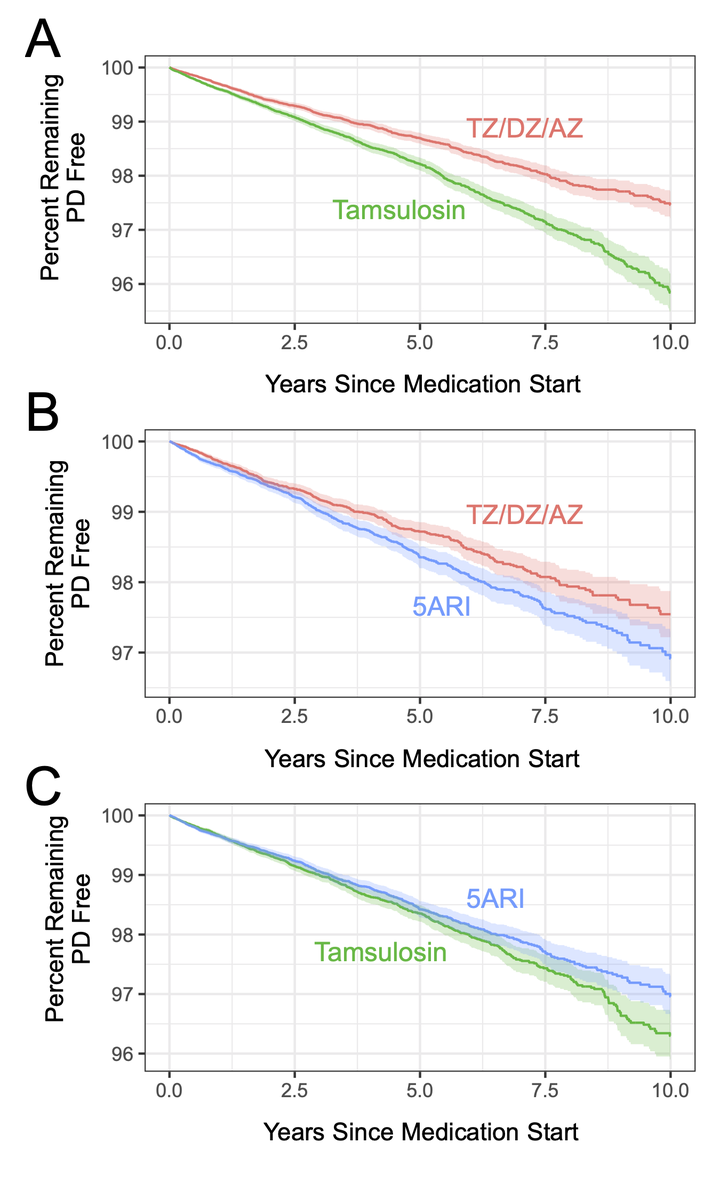
Abstract
Background: Terazosin (TZ) and closely related α1-adrenergic receptor antagonists (doxazosin [DZ] and alfuzosin [AZ]) enhance glycolysis and reduce neurodegeneration in animal models. Observational evidence in humans from several databases supports this finding; however, a recent study has suggested that tamsulosin, the comparator medication, increases the risk of Parkinson’s disease. Aims: We consider a different comparison group of men taking 5α-reductase inhibitors (5ARIs) as a new, independent comparison allowing us to both obtain new estimates of the association between TZ/DZ/AZ and Parkinson’s disease outcomes and validate tamsulosin as an active comparator. Methods: Using the Truven Health Analytics Marketscan database, we identified men without Parkinson’s disease, newly started on TZ/DZ/AZ, tamsulosin, or 5ARIs. We followed these matched cohorts to compare the hazard of developing Parkinson’s disease. We conducted sensitivity analyses using variable duration of lead-in to mitigate biases introduced by prodromal disease. Results: We found that men taking TZ/DZ/AZ had a lower hazard of Parkinson’s disease than men taking tamsulosin (hazard ratio (HR) =0.71, 95% CI [confidence interval]: 0.65–0.77, n = 239,888) and lower than men taking 5ARIs (HR = 0.84, 95% CI: 0.75–0.94, n = 129,116). We found the TZ/DZ/AZ versus tamsulosin HR to be essentially unchanged with up to 5 years of lead-in time; however, the TZ/DZ/AZ versus 5ARI effect became attenuated with longer lead-in durations. Conclusions: These data suggest that men using TZ/DZ/AZ have a somewhat lower risk of developing Parkinson’s disease than those using tamsulosin and a slightly lower risk than those using 5ARIs.